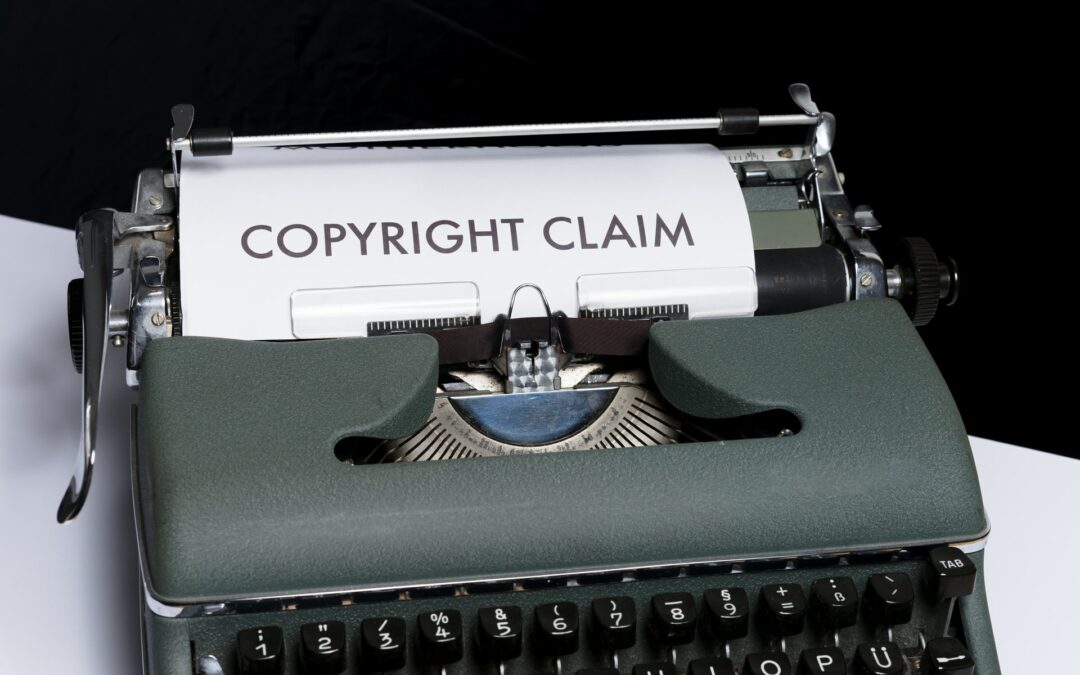Copyright: Tricky business at times
Client: I’m a writer. I entered a contract with a photographer to produce some headshots that I could use for the cover of my new book. The photographer developed the pictures but also included her trademark and a copyright symbol in a small portion of the lower right side of the pictures. I explained to her that I need the pictures to be free of all commercial markings like trademarks and copyright symbols.
My book is going to be offered for sale on Amazon.com in two weeks so I used Photoshop to remove the photographer’s trademark and copyright symbol, and I submitted the revised portrait to Amazon.com along with the book cover.
Do copyright laws give her the power to force me to use her trademark on my portraits?
Brief Answer: That’s very likely. However, the answer depends on who owns copyright to the portrait. If the photographer is considered an employee, then you—the employer—would own copyright in the absence of an agreement stating otherwise. On the other hand, if the photographer is the author of the headshots, you may be liable for creating an infringing derivative work.
I. Introduction:
Simply put, copyright pertains to the right to make copies. When an author expresses an original idea in a tangible form, the author has copyright to the work.[1] However, determining who the author is can be tricky. For example, employers can be authors of works created by employees, and people who commission a work to be completed by an independent artist can obtain copyright if a written agreement says such.
If one alters someone else’s copyrighted work without first obtaining permission to do so, the person making the alterations can be liable for infringement.
Still, if defenses to infringement apply, the person making the alterations may not face a penalty.
II. Ownership of works made by others:
An author is “he to whom anything owes its origin; originator; maker.”[2] An important exception exists in the case of “works made for hire” (“WMFH”).[3] In WMFH situations, “the employer or other person for whom the work was prepared is considered the author” and owns the copyright, unless there is a written agreement to the contrary.[4]
Section 101 of Title 17 of the United States Code lays out two scenarios where there can be a work made for hire. The two specific circumstances where a work is “for hire” are as follows:
- a work prepared by an employee within the scope of his or her employment; or
- a work specially ordered or commissioned for use as a contribution to a collective work, as a part of a motion picture or other audiovisual work, as a translation, as a supplementary work, as a compilation, as an instructional text, as a test, as answer material for a test, or as an atlas, if the parties expressly agree in a written instrument signed by them that the work shall be considered a work made for hire.[5]
So, when the parties have not signed a written agreement describing a creation as a work made for hire, the Court’s analysis will focus on whether the person preparing the work is an employee. To determine whether the artist working for you is an employee, the court will examine factors which include:
- the hiring party’s right to control the manner and means by which the product is accomplished.
- the skill required.
- the source of the instrumentalities and tools.
- the location of the work.
- the duration of the relationship between the parties.
- whether the hiring party has the right to assign additional projects to the hired party.
- the extent of the hired party’s discretion over when and how long to work.
- the method of payment.
- the hired party’s role in hiring and paying assistants.
- whether the work is part of the regular business of the hiring party.
- whether the hiring party is in business.
- the provision of employee benefits; and
- the tax treatment of the hired party.[6]
For example, in Community for Creative Non-Violence, a nonprofit organization hired a sculptor to produce a sculpture that would raise awareness of the plight of homeless people. Although the nonprofit organization directed the work of the sculptor, the Court found that the sculptor was not an employee since (1) sculpting is a skilled occupation, (2) the sculptor used his own tools, (3) the sculptor worked from his own studio, (4) the sculptor was retained for a short period of time (less than two months), (5) the nonprofit organization was not able to assign additional work to the sculptor, and (6) the sculptor had absolute freedom to determine when and how long to work.[7]
As a result, the sculptor was considered either a joint author or the sole author of the sculpture.[8]
With that in mind, unless an author (e.g., a photographer) has given up some or all of his rights, he is entitled to a number of exclusive powers. See Section III below.
III. Alterations and Derivative Works:
As a copyright owner, a person is entitled to a number of exclusive rights.[9] For example, the copyright owner has the exclusive right to make and create “derivative works” from his original copyrighted work.[10] A derivative work is “a work based upon one or more preexisting works, such as a[n]…art reproduction…or any other form in which a work may be recast, transformed, or adapted.[11]
Also, it is important to note that if a photographer has copyright to a photograph but grants a person permission to use the photo, the user “may not exceed the specific purpose for which permission was granted,”[12] and “unauthorized editing of the underlying work . . . constitute[s] an infringement of the copyright….”[13]
For example, in Tattoo Art Inc., v. TAT International, a tattoo artist (“the author”) created a number of illustrations that were to be used as prototypes for future tattoos requested by clients.[14] The author gave the defendant permission to use the author’s illustrations in exchange for a royalty fee. After some time, the defendant stopped making royalty payments to the author but continued to use the author’s illustrations.[15] In addition, the defendant removed the author’s copyright markings from the author’s illustrations and altered the color of some of the author’s works.[16] As a result, the defendant had created unauthorized derivative works of the author’s original works.[17]
After the author sued the defendant for copyright infringement, the Court found the defendant liable.[18]
Summary:
When having work produced by someone else (e.g., a photographer), the author of the work will typically be the person who places your ideas into a tangible form—like a photograph. However, if you and the photographer have signed a written agreement stating that the work was produced as a work made for hire or if the facts show that the artist was an employee, then you may be considered the author of the headshots.
Also, copyright laws give authors or copyright holders the exclusive right to make derivative works. So, if you remove things like trademarks and copyright symbols from a work, you could be liable for infringement.

